Alan Wake, five years on: How Remedy's accidental hero re-wrote the AAA rules
Released five years ago this week, a remarkable weight has always pressed down upon every aspect of Alan Wake, both in-game and upon the production itself. Firstly, the weight of expectation: between its May 2005 announcement and May 2010 shipping, a new console generation had landed and firmly bedded in, with the five-year window seeing huge single-player experiences like BioShock, Assassin’s Creed, Mass Effect and Uncharted not only emerge but all spawn sequels.
While Alan Wake didn’t underwhelm upon release, delays served to diminish some of the impact it could have had coming a few years earlier; the marketplace was more crowded, benchmarks had shifted, and while graphics showed improvements with each yearly revision trailered, the 2010 game didn’t dazzle in the way its 2005 teaser had, simply by virtue of the competition catching up.
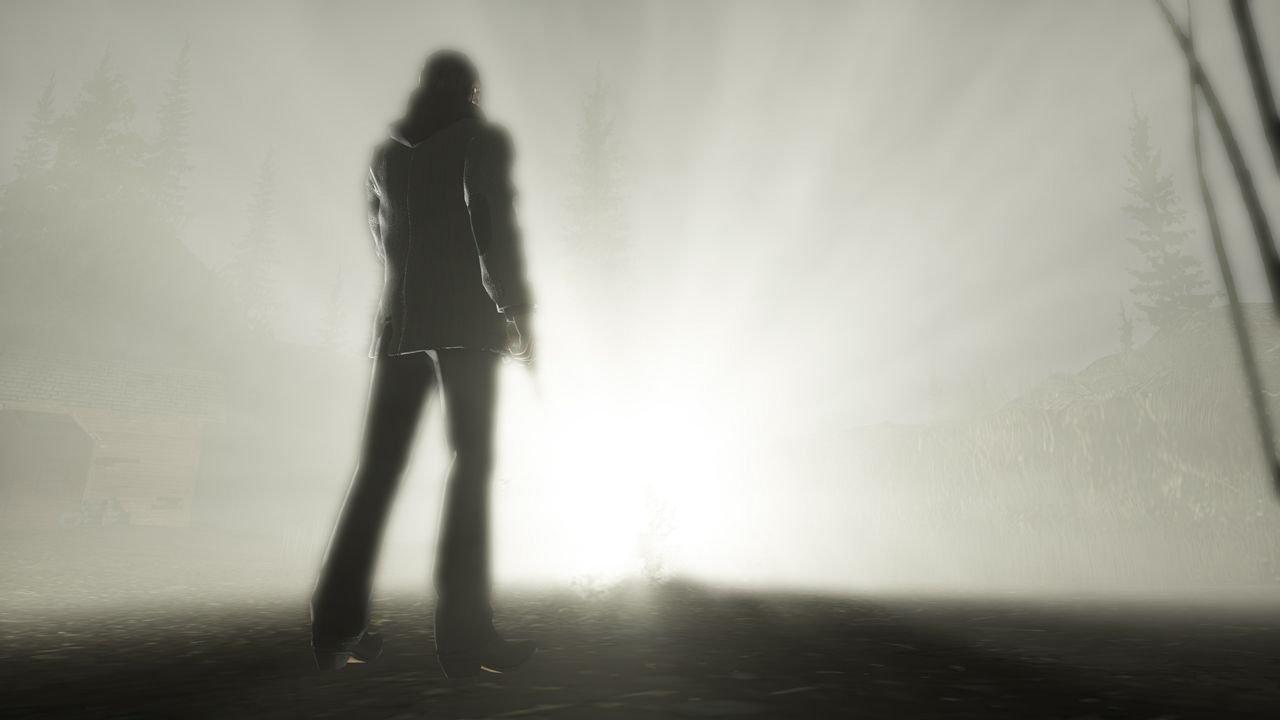
Expectation presses down on Wake himself, too: he hasn’t written for two years, a once dependable well of ideas long dried up. Everyone - his fans, his agent, his friends, his wife - expects him to come up with the goods, increasingly insistent as time drags on. Upon arriving at their island vacation cabin midway through the first episode, Wake’s wife Alice shouts for him to come upstairs for a surprise, her jeans suggestively draped over the landing banister. To his dismay, the surprise turns out to be not in the bedroom, but in the study: a typewriter. Creatively impotent and unable to perform for the page, he storms out, frustrated. Wake has buckled under the weight of celebrity - his drive stalling as his profile soars. Though lapping up the trappings, he detests the traps of fame, purportedly struggling with substance abuse, barely tolerating encounters with fans, and least one paparazzi scuffle is alluded to.
Remedy Entertainment, which started out with MS-DOS top-down vehicular combat racer Death Rally (one of those “How can they give away this much great game for free?” shareware gems that took up residence on my Pentium 75’s hard drive in the mid-‘90s) created a monster with its follow-up game, Max Payne. With the first of two great sequels and a Hollywood adaptation already on the scene when Alan Wake arrived, Payne was a hard act to follow: a gaming celeb famed for hard-boiled violence, swapped out for an altogether more reticent, trigger-unhappy prospect.
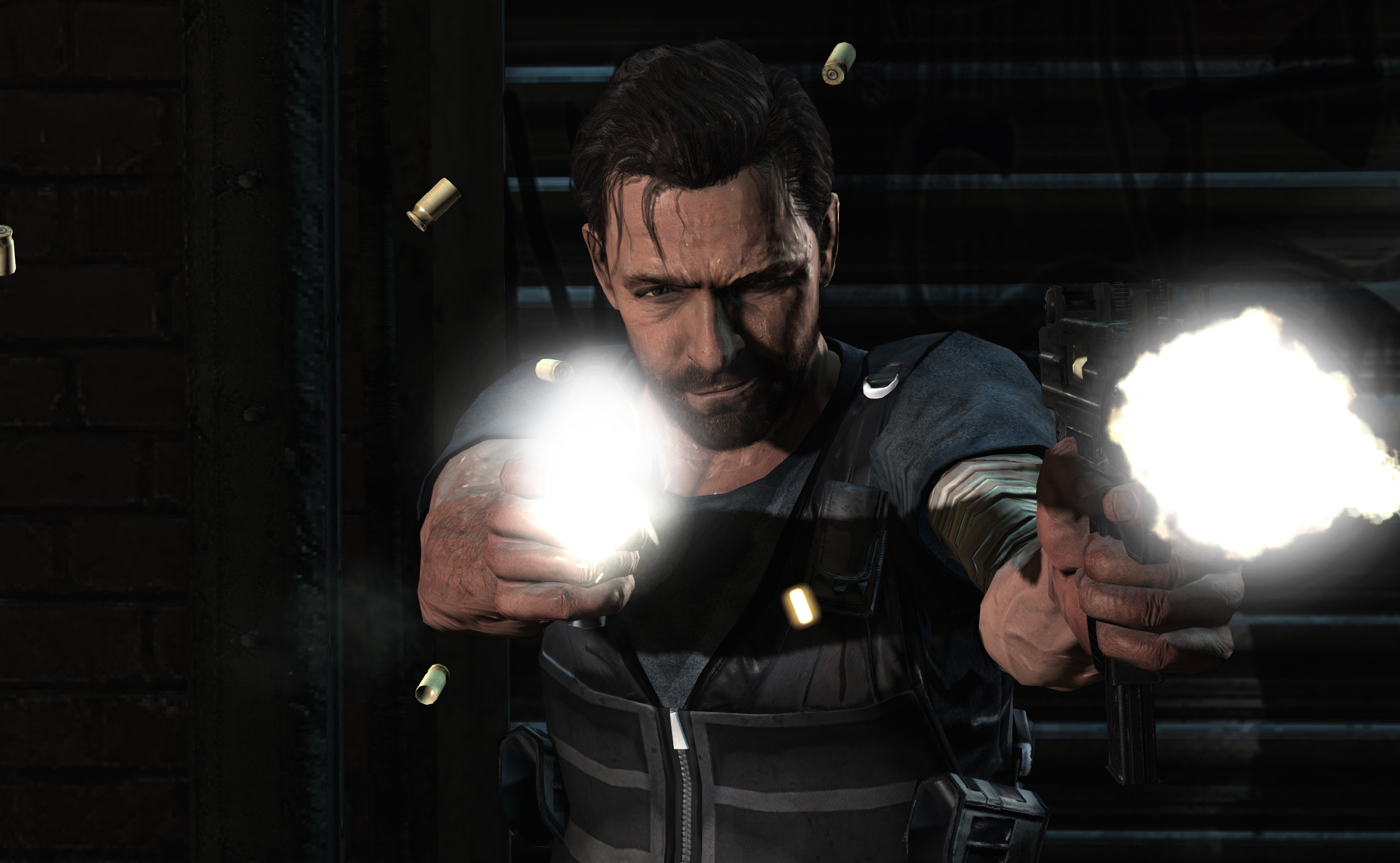
Max Payne parallels feature in-game in the form of Alex Casey, protagonist of Wake’s bestselling thriller series, a headstrong character the author fears he cannot hope to match up to when imaginary threats become corporeal. A collectible manuscript page reveals: “I was filled with doubt. I was nothing like the hero in my books. Alex Casey had gone through his life with single-minded determination, never wavering from his goal.”
The weight of the world rests on Wake’s modest shoulders - time and again, he emphasises he’s all that stands between Bright Falls being consumed by the Dark Presence. Driven by desperation, with a keen sense of responsibility, Wake is an essentially decent guy, and though he can be a jerk at times, stroppy and spoilt, prone to lashing out, such flaws mean that, five years on, he’s still one of the more complex, relatable characters action games have offered up - believably fazed by the horror unfolding around him, he seems as scared as the player. Wake’s weaknesses and asshole tendencies lend him a rare depth, and helped expand the dynamic range of a fundamentally ‘good’ character, laying groundwork for the ground-breaking depiction of moral ambiguities in The Last of Us.
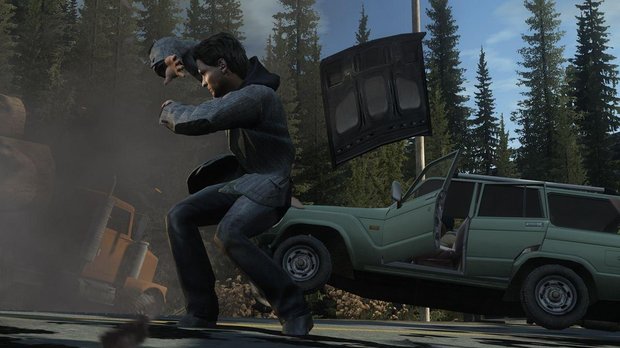
Remedy switched structure early in development, with an initially planned open-world streamlined into linear checkpoints for the sake of storytelling and event scripting. The game’s sandbox origins live on in its custom-built engine, however, with sprawling maps dotted with landmarks visible miles in the distance, and detailed vistas winding way beyond accessible areas. The beaten track is well-camouflaged, enabling a sense of location discovery rather than an obvious path, and the game offers just enough undergrowth to delve into and optional avenues to explore to maintain the illusion of a wider world going about its business as Wake confronts the darkness. I’ve never felt ‘hemmed in’ by Alan Wake, thanks to a lack or arbitrary boundaries, with impassible regions typically defined by geographical features such as rivers, sheer cliff sides and collapsed bridges, and cut scenes seamlessly kicking in to guide progression just before I can stray too far.
Sign up to the GamesRadar+ Newsletter
Weekly digests, tales from the communities you love, and more
The game’s composition may be the result of early compromise, but others since have recognised that carving wider roads for players allows for a more believable sense of passing through worlds instead of being pushed, while avoiding the tonal inconsistencies which can plague true sandboxes - lengthening the leash, rather than removing the reins entirely. Comparable later titles such as 2013’s Tomb Raider and The Last of Us feature areas which allow for multiple approaches, or exist simply to flesh out the universe, visits rewarded not with progression but with a deepening of experience. Players are temporarily free to roam within an invisible perimeter, while compulsory bottlenecks to pass through ensure the story plays out exactly as and when the developers intended. 2011 FPS Rage, which like Alan Wake, offers players the option of jumping behind the wheel for long-distance travel, has been described by id Software’s Tim Willits as “open, but directed”. Such subtle hybridisation of structures has become increasingly commonplace since Remedy prototyped it by chance.
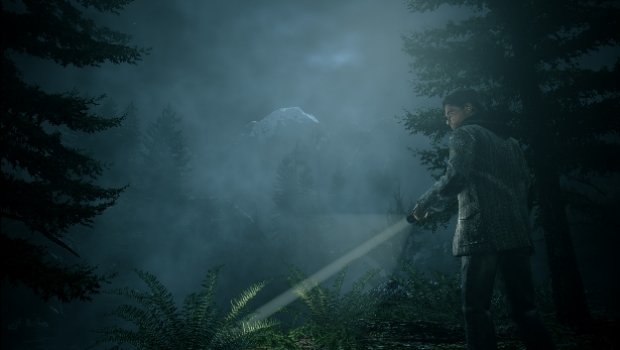
While criticisms of samey combat are valid, the one-two punch ‘eat light/eat lead’ mechanic still stands up - every encounter is fraught, a life-or-death burst of quick improvisation, micromanaged resources, and exploited opportunities. Crucial for a self-styled “psychological action thriller,” the player always feels vulnerable, deft pacing, a restrained, contextually realistic weapon selection and a lack of upgradable stats ensuring Alan Wake doesn’t suffer the curse of an overpowered endgame. The game doesn’t offer precision control response, but that’s half the point - Wake is a man out of his depth, physically unremarkable, not especially unfit but hardly an athlete either. He’s an everyman, albeit one blessed with a gift for churning out page-turners.
Every sloppy movement has real bodyweight behind it, every unballetic action a commitment to the momentum that follows. You know in Dark Souls, when your character isn’t yet strong enough to wield a big sword but you take a swing anyway, and the weight of the weapon carries along you with it? There’s a hint of that improficiency in every movement Wake makes - even the camera seems too heavy for our hero, carrying through perceivable momentum when repositioned.
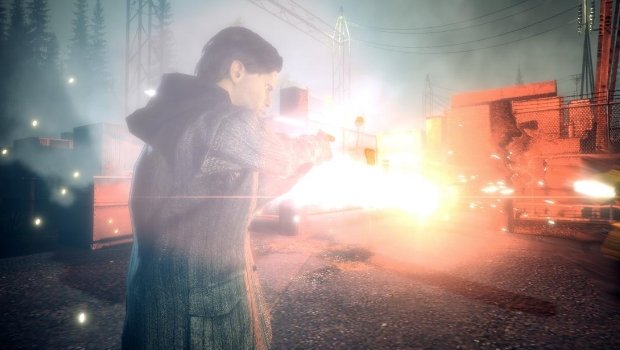
Wake’s physical shortcomings and inability to outrun enemies serve to give him a unique physical presence, offering the sensation of inhabiting a real body with limitations rather than a generic gun on legs. In dialing down superheroic attributes, many recent action games have similarly cast players as initially less-capable characters. Both the rebooted Lara Croft and The Evil Within’s Sebastian Castellanos are maimed within minutes - players handed damaged goods from the outset, susceptibilities immediately highlighted.
As Wake is thrust into his first combat experience, Lara too must make her debut kill, while run-of-the-mill detective Castellanos’ shaky hand is gradually steadied through upgrades. Perhaps the days of the out-of-the-box badass - the likes of Max Payne - are numbered, thanks in part to Wake. Even the phenomenally competent "B.J." Blazkowicz is no longer impervious, gravely injured during Wolfenstein: The New Order and incapacitated for 14 years, powerless to act as the world is ravaged around him.
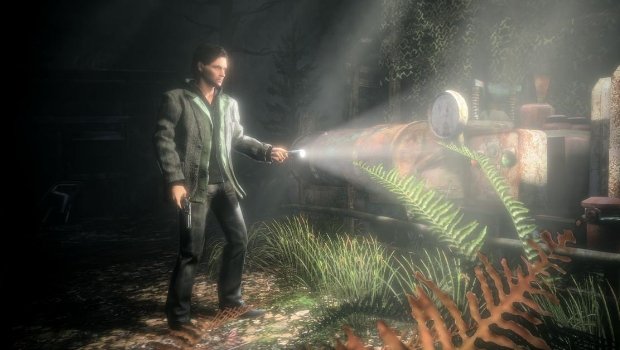
Other criticisms leveled at Alan Wake over the years have included characters behaving unbelievably given their circumstances, and mood-breaking product placement. I maintain both are intentional design choices. Wake is oblivious to the clearly possessed waitress serving him sedative-laced coffee, and later agrees to get blind drunk in the midst of a living nightmare, because that’s precisely the kind of daft decisions characters make in the schlocky horror the game homages. Let’s not forget that the book manuscript supernaturally triggering the game’s events has been written under immense pressure and with the guidance of a sadistic editor, with subtlety going out of the window as Wake crams in clichés with a tight deadline looming.
Key influence David Lynch has said product placement in film “putrefies the environment”. With its glaring cell phone ads and branded batteries, Alan Wake intentionally soils itself, slapping on a layer of absurdity and tackiness which screams of cheap network drama, a notion it further parallels and plays with via multiple clips of trashy, in-universe TV show Night Springs. Remedy’s reverence for its source material shines through everywhere, from overt author namechecks to in-car cutscenes in which the game engine emulates a shoddy rear projection effect.
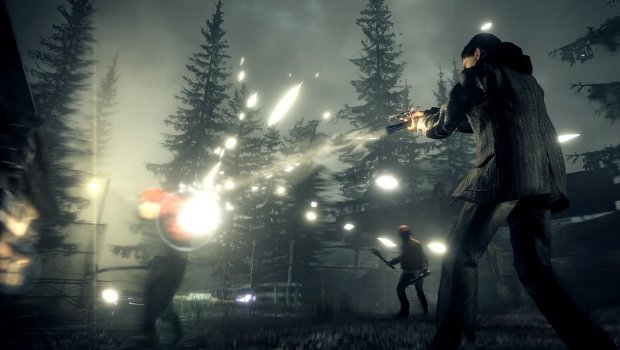
The developer had already demonstrated a keen self-referential streak with Max Payne 2’s in-universe cop show Dick Justice riffing on its predecessor’s plot, but Alan Wake takes this to a new level by throwing the concept of Payne as a celebrated icon into its melting pot of influences: it’s the simultaneous celebration and subversion of genre tropes that works so well, pushing video game postmodernity to a sophistication still yet to be matched. Using Lynch’s Twin Peaks as just one stylistic springboard, Alan Wake achieves a comparable uncanny, undefinable genre quality all of its own.
Perhaps the heaviest weight pressing down on Alan Wake is that of its legacy. With its back-to-back TV episode stylings, the game’s innovative format now feels prescient in the wake of Netflix binges - indeed, lead writer Sam Lake has said DVD boxsets were the structural model. Episodic gaming was still finding its commercial feet five years ago, after decades of piloting, and Alan Wake’s distinct segmentation, with its cliffhangers and recaps was - and remains - a bold design decision. However, its execution is flawed.
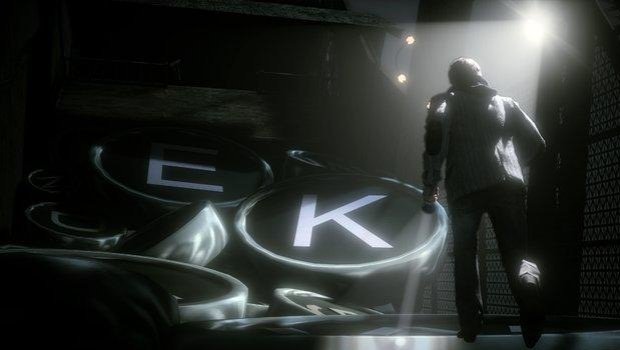
The game was followed by two episodes of DLC - both of high quality - which complete the story arc and feel essential to the Alan Wake experience. The disparity in delivering the bulk of the game in one on-disc chunk and then the final act as later, optional downloads seems in hindsight obligating to expectations of the industry at the time (“there must be DLC!”) rather than benefiting the game’s overall presentation. The skewed separation of episodes smacks of compromise, a middle ground between all eight installments being compiled and playable from the get-go - as 2012’s PC port offers - and Remedy releasing each episode individually, maybe one every three weeks, which would have covered the period from mid-May until mid-October 2010, when final episode The Writer eventually appeared. Perhaps Alan Wake, already delayed so long, could have benefited from being delayed just a little longer to see the dawn of the DLC season pass.
Despite positioning the game as the first ‘season’ in an ongoing show, a full-blown continuation has not yet come to pass. Remedy last month released prototype footage of an abandoned sequel, elements of which eventually found their way into 2012’s standalone LIVE Arcade spinoff Alan Wake’s American Nightmare. Meanwhile, rumours of an Xbox One remaster of the original game were sparked thanks to a passing mention on a pre-order survey for the next Remedy title.
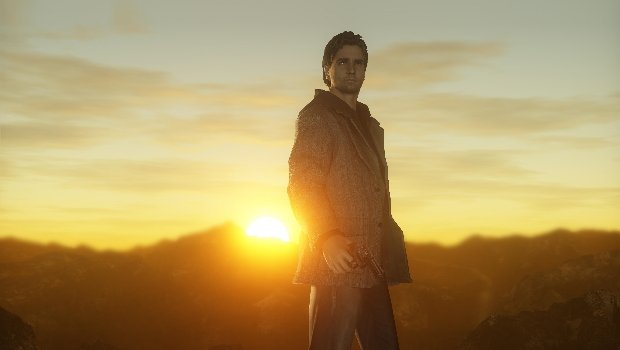
With studio focus shifted to Quantum Break (which, given Remedy’s pedigree, looks to be the exclusive which finally convinces me to stump up for an Xbox One), it remains to be seen if another Alan Wake adventure is on the cards. I’ll be downhearted if the enjoyable-but-lightweight American Nightmare is the last we see of him - Bright Falls remains one of my favourite destinations of the last console generation, and is well worth revisiting today. Long after Remedy’s original rockstar Max Payne signed to a major label for a third outing (a label whose own Red Dead Redemption, launching within a week of Alan Wake, obliterated it in terms of sales), Wake remains the studio’s cult quasi-hero, a conceptual trailblazer who suffered the odd misfortune of somehow arriving both too late and too early.
Dan is a freelance writer who has written for numerous publications over the years, including AskMen, GamesRadar, and Goodreads.



